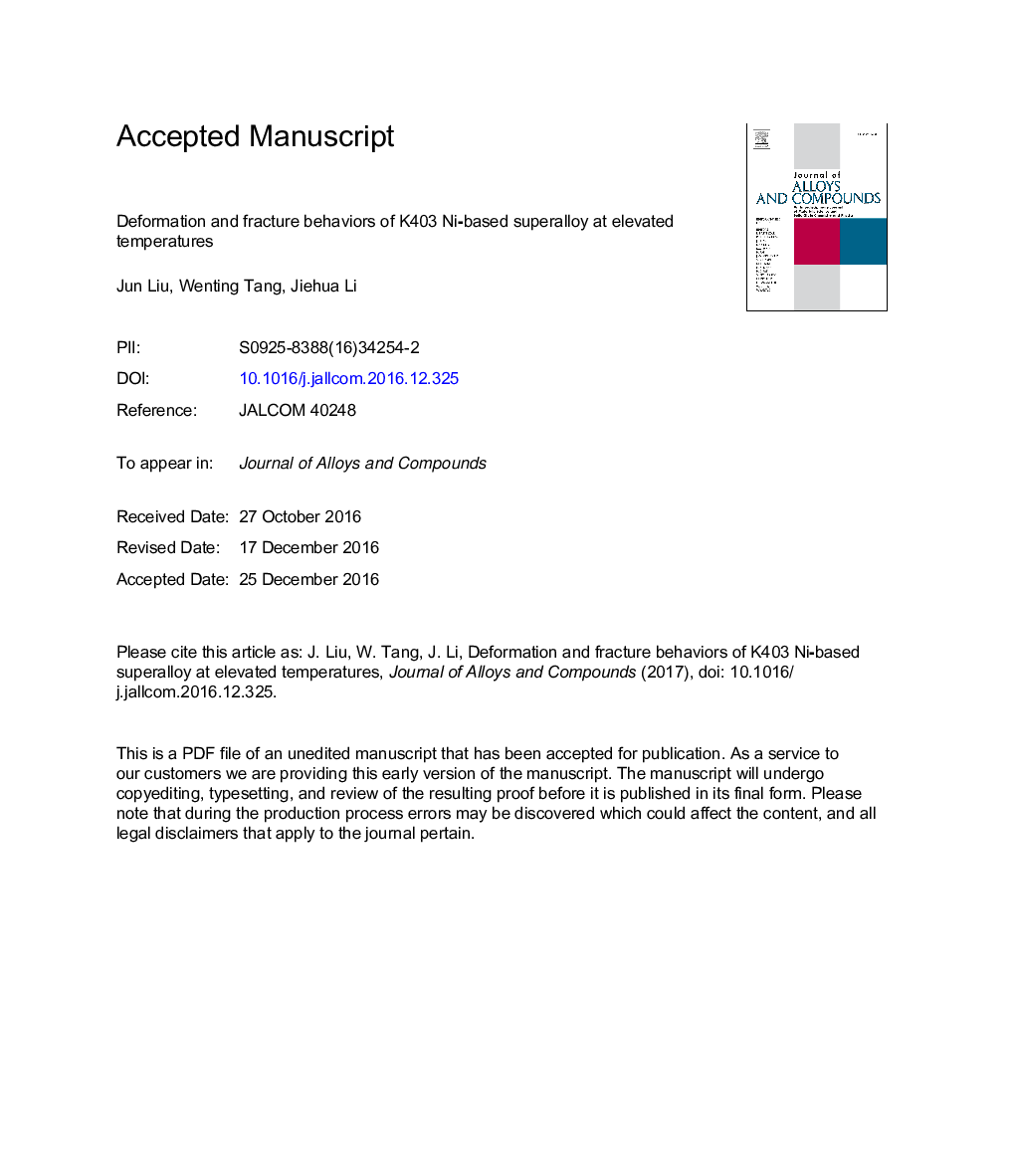| Article ID | Journal | Published Year | Pages | File Type |
|---|---|---|---|---|
| 5460581 | Journal of Alloys and Compounds | 2017 | 33 Pages |
Abstract
The effects of the deformation temperatures (850 °C-1000 °C), the strain rates (0.01 sâ1 to 10 sâ1) and the stress states on the deformation and fracture behaviors of K403 Niâbased superalloy were investigated by thermal compression and tensile simulating tests using Gleebleâ1500 thermoâsimulation machine. The microstructure evolution and fracture surface was also investigated using scanning electron microscope and transmission electron microscope, with the aim to elucidate the deformation and fracture mechanism. It was found that increasing the strain rates increases the peak stress and the yield stress, but decreases the elongation and the yield strain. In contrast, increasing the deformation temperatures decreases the peak stress and the yield stress, but increases the elongation and the yield strain. Various dislocation cells were observed after the deformation at 850 °C. Increasing the deformation temperatures decreases the dislocation density. Brittle quasi-cleavage fracture morphology was observed at the temperatures below 900 °C. Increasing the deformation temperatures changes the fracture from quasi-cleavage fracture to inter-granular fracture. The fracture mechanism of K403 alloy at high temperatures was revealed, and the high temperature fracture model of K403 alloy was established.
Related Topics
Physical Sciences and Engineering
Materials Science
Metals and Alloys
Authors
Jun Liu, Wenting Tang, Jiehua Li,
